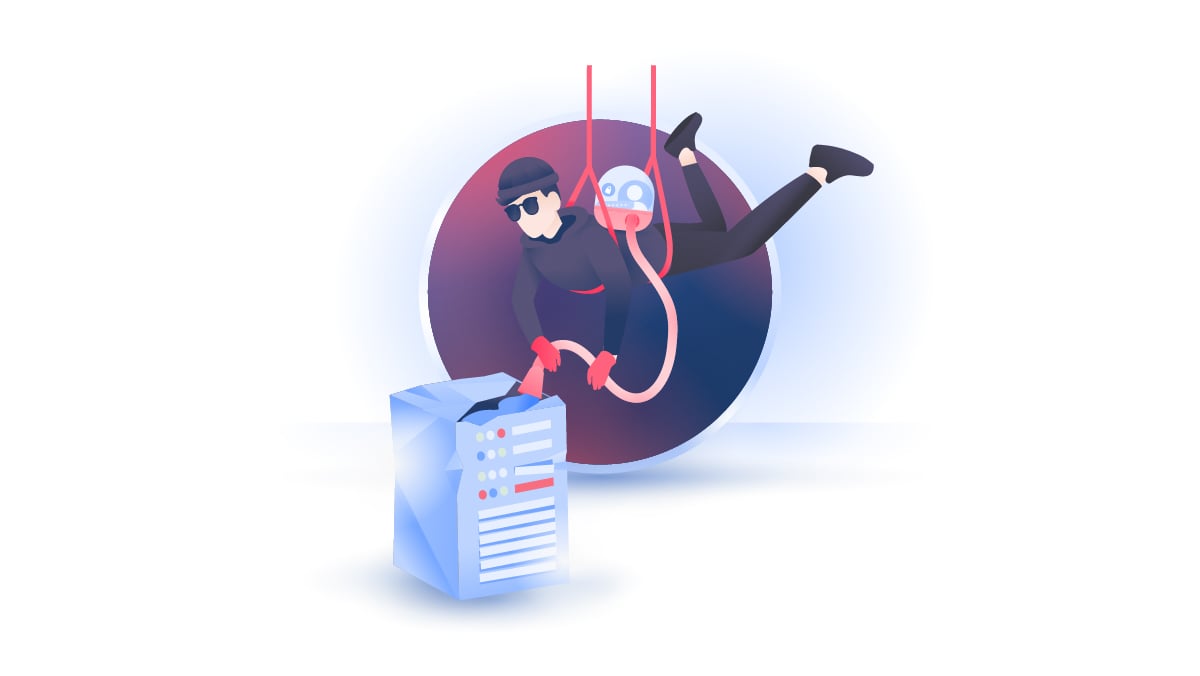Credential stuffing: What it is and how to prevent it
Ever found yourself using the same trusty password for a bunch of online accounts because it’s just easier? That convenience might be setting you up for a dangerous cyberattack called credential stuffing. In this article, we’ll dive into the nitty-gritty of what credential stuffing is, how attackers exploit this vulnerability, and most importantly, how you can protect yourself from falling victim to such attacks.
Table of Contents
Table of Contents
What is credential stuffing?
Credential stuffing definition
Credential stuffing is a cyberattack where hackers use breached usernames and passwords to access victims’ accounts. They obtain credentials either by purchasing them on the dark web, accessing leaked databases, or employing social engineering techniques. Hackers then try using these credentials to access people’s accounts on various apps or websites. Once they break in, they can sell your account, hold it for ransom, or use it for other attacks.
Credential stuffing attacks are particularly effective because many individuals reuse the same username and password combinations across multiple platforms. This habit gives credential stuffing a big advantage because once one site’s credentials are compromised, it can open the floodgates to many others.
For individuals, falling victim to credential stuffing can mean identity theft, losing money, or having your privacy invaded. For businesses, these attacks can lead to serious financial loss, a decrease in customer trust, and hefty regulatory fines. That’s why both individuals and businesses should adopt robust security practices to fend off the risks that come with credential stuffing.
How credential stuffing works
For credential stuffing to succeed, attackers rely on data leaks and compromised credentials. Here’s a breakdown of how attackers execute this attack:

- Hackers obtain large databases of stolen credentials through data breaches or dark web purchases.
- Instead of entering each stolen username and password by hand, hackers deploy an automated tool called a botnet. These bots systematically input the credentials into various websites and apps.
- The botnet attempts each stolen credential pair on the target site. If successful, the attacker gains unauthorized access.
- Once inside, attackers can engage in various malicious activities such as stealing personal information, making fraudulent transactions, or even spreading malware.
Imagine using the same email and password combination for your car-share app, email, social media, and online shopping accounts. If the car-share app suffers a data breach and your credentials are exposed, attackers can use automated tools to try these credentials across various services. For example, if your credentials are compromised in the car-share app breach, attackers could potentially access your online shopping accounts and get their hands on your financial details.
Credential stuffing attacks vs. brute force attacks
Credential stuffing might be compared to a brute force attack, but it’s not exactly the same. Even though both cyberattacks stuff login credentials on multiple accounts until they succeed, in brute force attacks, hackers generate passwords themselves rather than those taken from other sources. Here is the breakdown of all the main differences between the two methods:
- Source. Credential stuffing uses stolen username/password pairs from data breaches, while brute force attacks try multiple random or systematically guessed passwords on one or more accounts.
- Method. Credential stuffing relies on the assumption that users reuse passwords across different sites, while a brute force attack systematically tries all possible combinations until finding the correct one.
- Target. Credential stuffing attacks aim to exploit compromised credentials from other breaches, whereas brute force attacks can target any account.
- Efficiency. Credential stuffing is typically faster and more efficient since it uses verified credential pairs. Brute force attacks are slower and more time-consuming because they involve trying numerous possible password combinations.
How to prevent credential stuffing
Stopping credential stuffing attacks takes teamwork from both users and companies. Both parties need strong cybersecurity practices to reduce the risk of these attacks. Here are tips for users and companies to prevent credential stuffing.
For users
- Don’t reuse passwords. Use a unique password for every account to prevent a breach on one account from affecting others.
- Enable two-factor authentication (2FA) or multi-factor authentication (MFA). This practice will add an extra layer of security by requiring additional verification beyond just a password.
- Use strong passwords. Create long and complex passwords that include a mix of letters, numbers, and special characters to make them harder to guess.
- Employ a password manager. If you’re afraid you won’t be able to keep track of all your passwords, a password manager will do it for you. Password managers like NordPass will help you store and remember all your passwords.
- Regularly update your passwords. Change your passwords periodically to reduce the risk of them being compromised over time.
- Monitor your accounts for suspicious activity. Keep an eye on your accounts and enable notifications for any unusual login attempts or activity.
- Stay informed about data breaches. Use services that notify you if your credentials have been exposed in a data breach and take immediate action to change compromised passwords.
For companies
- Implement rate limiting. Restrict the number of login attempts from a single IP address to prevent automated tools from trying numerous combinations.
- Deploy CAPTCHA challenges. Use CAPTCHAs to distinguish between human users and bots during login.
- Monitor login attempts. Track suspicious activity patterns or spikes in failed login attempts, which could indicate potential security threats or attacks.
- Use anomaly detection systems. They will identify unusual login behaviors, such as multiple logins from different locations in a short period of time.
- Encourage 2FA/MFA adoption. Require or strongly encourage two-factor or multi-factor authentication on all user accounts.
- Secure APIs and endpoints. Ensure that all API endpoints are secured and monitored for abnormal activity.
Want to read more like this?
Get the latest news and tips from NordVPN.


